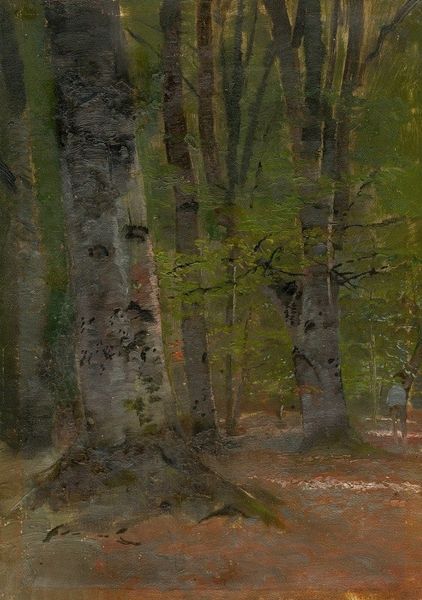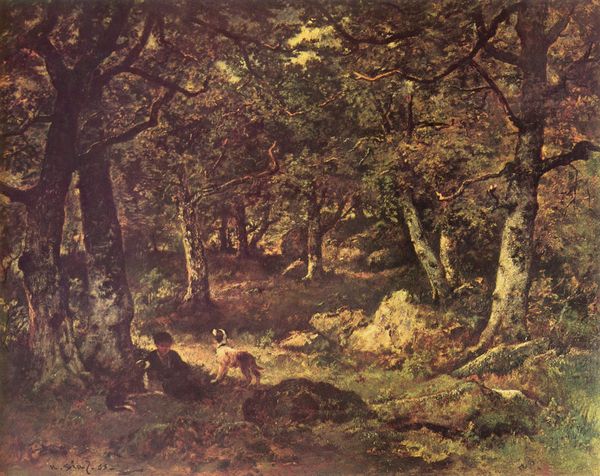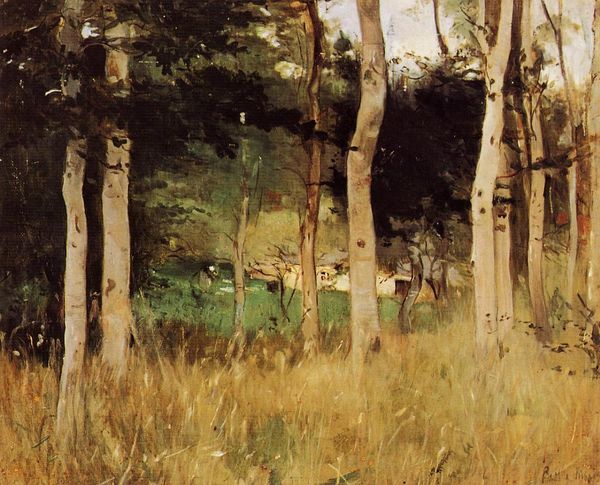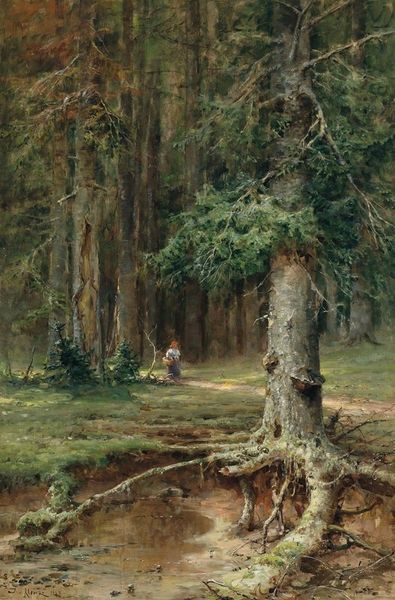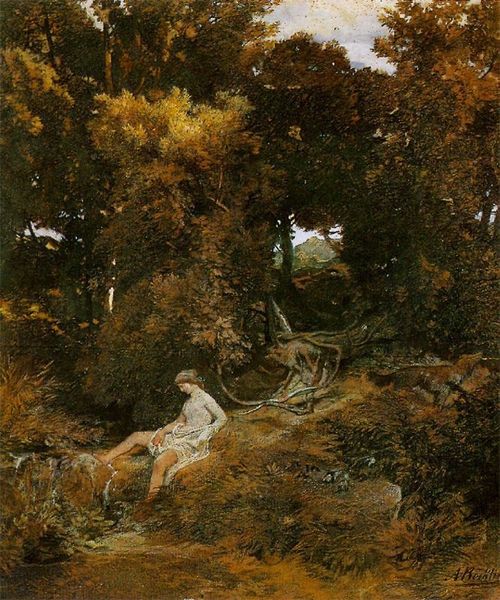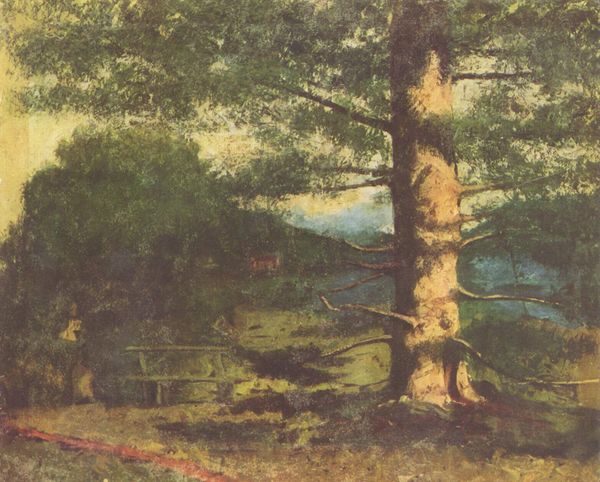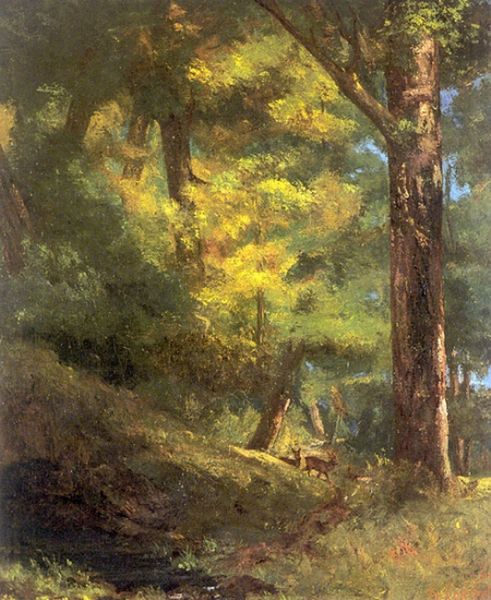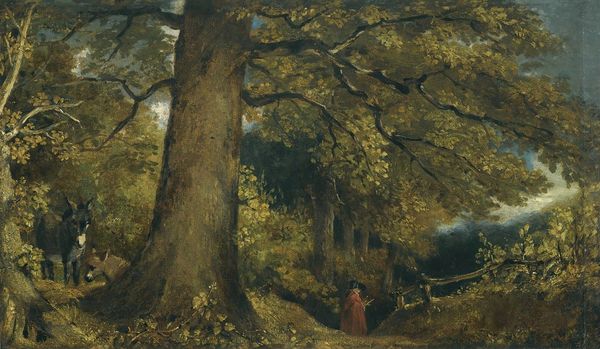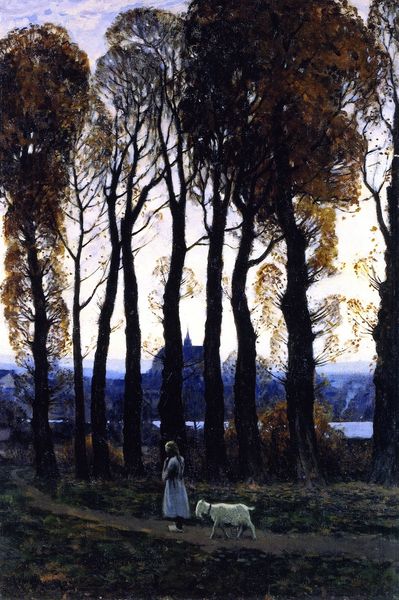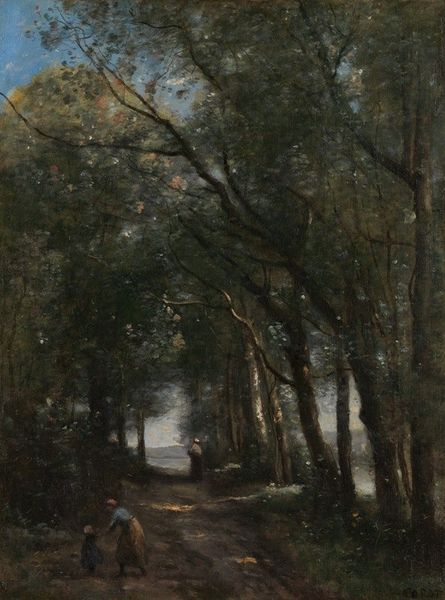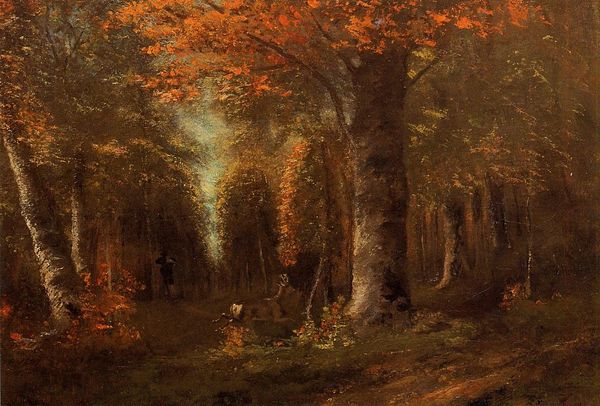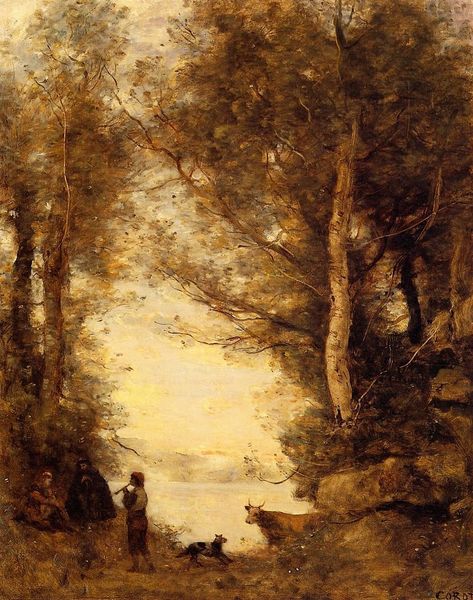
painting, oil-paint
#
portrait
#
impressionistic
#
painting
#
impressionism
#
oil-paint
#
landscape
#
nature
Dimensions: 31 x 45 cm
Copyright: Public domain
Curator: This is Berthe Morisot’s “The Old Track to Auvers,” an oil painting from 1863. What are your first thoughts? Editor: Immediately, I’m drawn to the figure nestled at the base of the tree, and what I think is the shadowy outline of a dog at his feet. It feels quiet, almost secretive. The muted palette certainly adds to that sense of intimacy. Curator: That shadowy presence of the dog is so telling, and I agree. I am thinking of all of our complex interrelationships, and perhaps it's worth noting here that dogs often serve as symbols of fidelity and companionship, a protective spirit accompanying the figure seated at the base of this impressive, sheltering tree. Editor: Sheltering indeed, the trees form a natural frame, guiding our eye. I’m curious, given its early date, about the landscape tradition Morisot is engaging with here. Was she deliberately evoking earlier, more formal landscapes, and if so, what does that tell us about her position within the Parisian art world at the time? Curator: The placement of that human figure invites a reading not just of place, but also the human psyche in dialogue with it, almost a hermit motif within nature. Perhaps indicating a journey towards inner reflection but, of course, the Impressionist influence had not yet been formalized; do we read that solitude as progressive at all? Editor: Possibly, it feels liminal, straddling the space between those traditions. By including figures within it, she domesticates that open space somewhat, drawing the viewer into a more private, personal sphere, this moment under the tree's shelter becomes less about the grand expanse and more about the intimate connection between the man and dog. Curator: Absolutely, and looking closer, consider the layering of light and shadow, that masterful brushwork which feels both precise and intentionally soft. And those qualities enhance our sense of mystery… the feeling there is something yet to be discovered, understood, and brought to the surface. Editor: Agreed, and perhaps that open-endedness, that sense of things only partially revealed, is exactly where Morisot’s genius lies. By not offering all the answers, she invites us to participate in the making of meaning. Curator: In essence, we bring to the experience our own projections, completing a symbolic dance of insight and recognition in that liminal space. Thank you! Editor: Thank you, a perfect intersection of the internal and external!
Comments
No comments
Be the first to comment and join the conversation on the ultimate creative platform.
